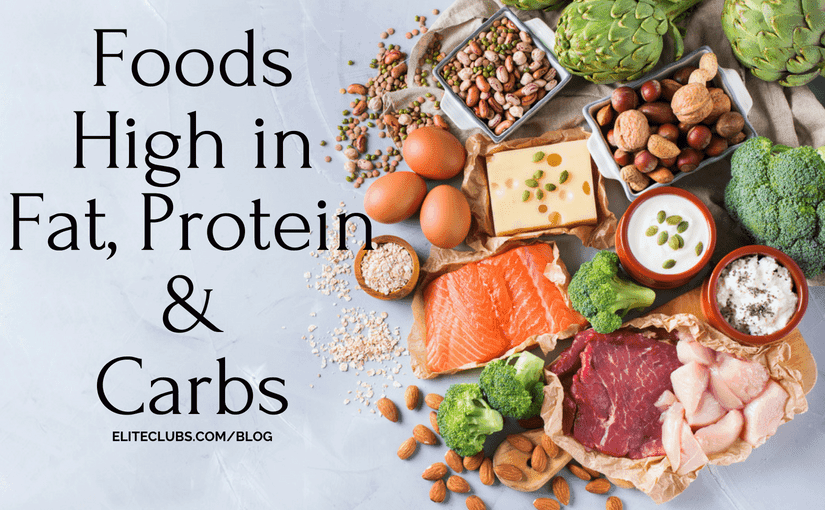Most of us want to eat a healthy diet but not all of us know what that means. Which foods are good sources of protein? What is the difference between refined grains and whole grains? Why should we include fats in our daily eating pattern? Read on to find out!
Nutrient Sources
With so many food options out there, it can be difficult to maintain a balanced diet while still eating a variety of different meals. Let’s take a look at a variety of nutrient sources the have healthy values of fat, protein, and carbs.
Fats
While fat contains over double the amount of calories than grains and protein, it is an essential nutrient that plays many important roles. Fat helps with the absorption of fat-soluble vitamins (A, D, E, and K), is the building block for omega-3 and omega-6 fatty acids, and is a source of fuel. It can also regulate body temperature, insulate our organs, stabilize blood sugar, and aid in blood clotting.
There are two main types of fats: saturated fats and unsaturated fats. Saturated fats are typically solid at room temperature and occur naturally in many foods, the majority of which are animal sources. Examples include lamb, pork, beef, poultry with skin, butter, and cheese. These types of fats may increase blood cholesterol levels and may increase our risks of heart disease. Unsaturated fats are usually liquid at room temperature. They are found mainly in fish, avocados, olives, walnuts, and vegetable oils such as safflower, canola, olive, and sunflower. When unsaturated fats are consumed more frequently than saturated fats, you may see an improvement in your blood cholesterol levels.
Protein
Proteins are essential to bones, muscles, skin, and blood. They also help build enzymes, hormones, and vitamins. They do all of this while providing calories (energy) as well as B vitamins, vitamin E, iron, zinc, and magnesium. B vitamins help the body release energy, aid in the creation of red blood cells and tissues, and play a role in nervous system function. Iron is used to carry oxygen in the blood.
Great animal sources of protein include chicken, turkey, tuna, beef, and tilapia. Plant sources of protein include tempeh, nuts, seeds, lentils, beans, and quinoa. There are other meatless sources such as yogurt, nut butters, oats, eggs, and cottage cheese that are great protein options.
It is a good idea to vary your protein sources and choose seafood at least twice per week. Salmon, trout, and herring are great options rich in anti-inflammatory omega-3 fatty acids. Go meatless for a night by choosing beans, peas, or soy products as the main protein source. Try snacking on nuts for an added boost of protein between meals.
Grains
Grains are defined as any food made from wheat, rice, oats, cornmeal, barley, or another cereal grain. There are two subgroups of grains: whole grains and refined grains. Whole grains have not been processed and contain the entire grain kernel. Examples of whole grain include whole-wheat flour, bulgur, oatmeal, whole cornmeal, and brown rice. Refined grains have been milled. This is a process where the bran and germ have been removed. Milling removes the dietary fiber, iron, and many of the B vitamins grains naturally contain. Examples of refined grains include white flour, white bread, and white rice.
We receive many nutrients from whole grains that help with weight management, digestive issues, and aid in reducing the risk of heart disease. The dietary fiber that whole grains contain also provide a feeling of fullness with fewer calories. Grain products fortified with folate are especially important for those who are pregnant or would like to become pregnant as folate helps prevent neural tube defects. At least half of the grains we consume daily should be whole grains.
Schedule a Nutrition ConsultationWritten by Sarah Brunner, RDN, CD; Elite Sports Clubs Registered Dietitian
Sarah is certified in food allergies/intolerances and nutritional counseling, Academy of Nutrition and Dietetics; has a certificate in Dietetics from Mount Mary University; and a BA in Education and Mathematics from the University of Wisconsin – La Crosse.

